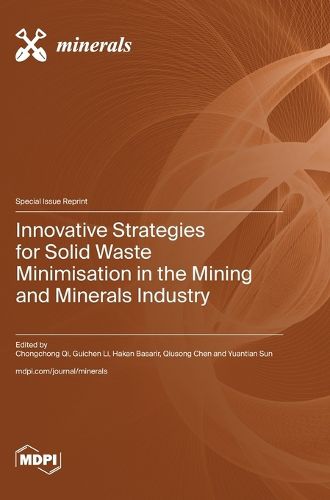Readings Newsletter
Become a Readings Member to make your shopping experience even easier.
Sign in or sign up for free!
You’re not far away from qualifying for FREE standard shipping within Australia
You’ve qualified for FREE standard shipping within Australia
The cart is loading…






This title is printed to order. This book may have been self-published. If so, we cannot guarantee the quality of the content. In the main most books will have gone through the editing process however some may not. We therefore suggest that you be aware of this before ordering this book. If in doubt check either the author or publisher’s details as we are unable to accept any returns unless they are faulty. Please contact us if you have any questions.
The mining and minerals industry has witnessed a significant increase in the generation of solid waste (e.g., mine tailings, coal gangue, coal fly ash, slag) as the industry has evolved. Due to the substantial potential for environmental harm, the management of solid waste remains one of the most challenging issues facing the industry. The traditional methods employed in solid waste disposal, such as direct surface disposal, have numerous limitations, hindering their broader application. These limitations include the risk of storage facility failure, the use of land resources, and the potential for heavy metal contamination. Consequently, there is a pressing need for innovative strategies that minimize the generation of solid waste in the mining and minerals sector. Research efforts have aimed to enhance approaches to the minimization of waste minimization across various dimensions. While some studies focus on reducing the generation of waste at the source, others emphasize the development of novel recycling methods. This reprint highlights research related to the minimization of solid waste within the mining and minerals industry. It includes experimental investigations and machine learning-based predictive models that address various topics, such as the recovery of valuable components from copper slag, the recycling of solid waste and its use as a supplementary cementitious material, the reuse of solid waste in backfill applications, and the employment of advanced machine learning techniques to support waste minimization efforts.
$9.00 standard shipping within Australia
FREE standard shipping within Australia for orders over $100.00
Express & International shipping calculated at checkout
This title is printed to order. This book may have been self-published. If so, we cannot guarantee the quality of the content. In the main most books will have gone through the editing process however some may not. We therefore suggest that you be aware of this before ordering this book. If in doubt check either the author or publisher’s details as we are unable to accept any returns unless they are faulty. Please contact us if you have any questions.
The mining and minerals industry has witnessed a significant increase in the generation of solid waste (e.g., mine tailings, coal gangue, coal fly ash, slag) as the industry has evolved. Due to the substantial potential for environmental harm, the management of solid waste remains one of the most challenging issues facing the industry. The traditional methods employed in solid waste disposal, such as direct surface disposal, have numerous limitations, hindering their broader application. These limitations include the risk of storage facility failure, the use of land resources, and the potential for heavy metal contamination. Consequently, there is a pressing need for innovative strategies that minimize the generation of solid waste in the mining and minerals sector. Research efforts have aimed to enhance approaches to the minimization of waste minimization across various dimensions. While some studies focus on reducing the generation of waste at the source, others emphasize the development of novel recycling methods. This reprint highlights research related to the minimization of solid waste within the mining and minerals industry. It includes experimental investigations and machine learning-based predictive models that address various topics, such as the recovery of valuable components from copper slag, the recycling of solid waste and its use as a supplementary cementitious material, the reuse of solid waste in backfill applications, and the employment of advanced machine learning techniques to support waste minimization efforts.